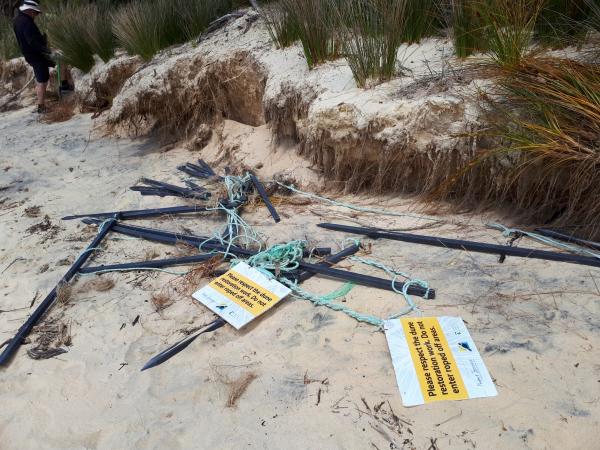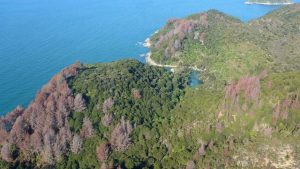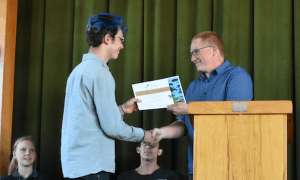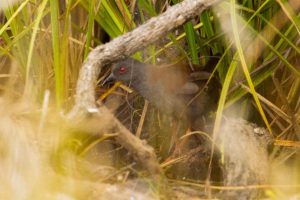
Medlands beach was the worst hit with the main sand bank being completely washed out. Some sand is expected to come back over summer and plants may grow down into it again but it is likely that this will be a recurring event at this site because of the proximity of the forest species. At other beaches like Anchorage, Appletree and Coquille Bays some of the planting were damaged, but most only buried deeper.
Project Janszoon’s restoration supervisor Helen Lindsay says she is actually really pleased the restoration work was tested. “A washout is not a disaster, it’s what happens in a dynamic dune environment. What we have learnt is how robust our plantings are, whether we have planted in the right place, and what sort of natural resilience the plantings are giving the dunes,” she says.
As part of the Firesmart work, gorse has been removed from dune areas, and iceplant and marram grass replaced with natives like spinifex and pingao. Helen says when weeds are removed, nature decides what species are right for the dune areas. Woody species can establish while the dune is stable but often eventually get their roots salted and they die away and give space for the sand binders to expand again.
“While we did lose some plants, a lot of the spinifex got buried deeper but is not lost. It will grow again, then get buried and grow, building up the dunes and providing natural resilience”.
Sand dunes are important as they are the natural barrier between land and sea and protect inland areas against storms and waves. They are home to many plants and animals. The ever constant forces of wind and water mean they constantly change and we should expect them to grow, shrink or move.
A pilot dune restoration programme began at Anchorage in 2013 with DOC removing the gorse and volunteers, including Motueka High School students as part of the Adopt a Section programme, Forest and Bird, and Abel Tasman Birdsong Trust members taking responsibility for the planting and weeding.
The early success of this pilot saw four other sites, Appletree Bay, Coquille Bay, Mosquito Bay and Wainui sandspit also undergo a makeover. Motupipi Primary School students have helped with the work at Wainui as part of the education programme.
As well as being an invasive weed, gorse is also highly flammable so replacing it with less flammable native species in these locations will help reduce the fire risk in the Park.
The effort by the volunteers to maintain the plantings has meant we are able to fast track further dune restoration work. In late 2017 gorse removal and planting began at three more sites including Anapai, Onetahuti, and Porters beaches. These are due to be completed in 2018 along with Bark Bay and Tonga Quarry. Maintenance of these sites will be an ongoing task for several years but will reduce over time as natives establish.



